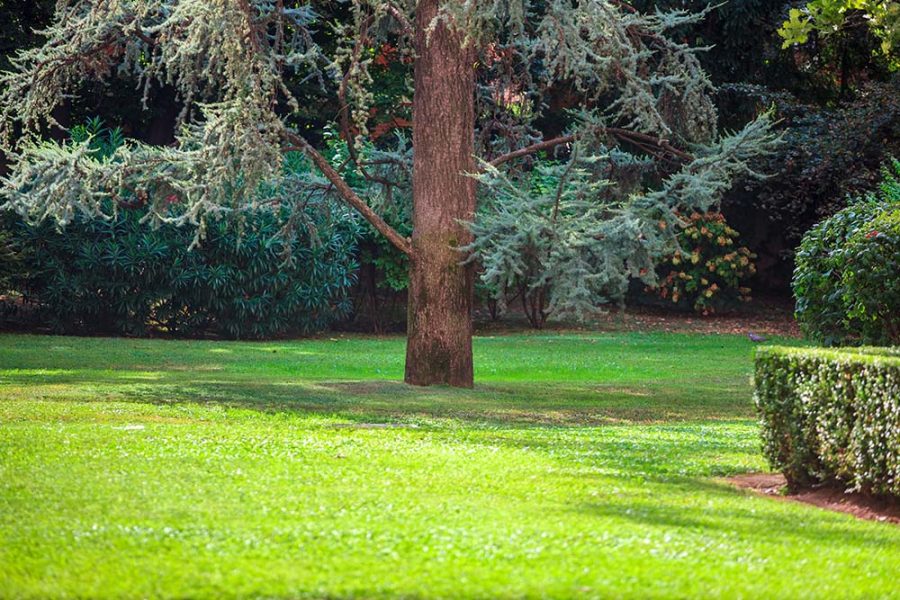Best Fertiliser for Lawns, Flowers, Plants, Trees and Their Root Systems

Fertiliser is an essential part of a plants growth. If you want to have the healthiest plants, lawns, and flowers, then you’ll need quality fertiliser that ticks all of the right boxes. Of course, with so many on the market, it can be difficult to decide on which is best for you. In this article, we’re going to try and narrow down the search for you. Or, at the very least, provide you with the right information required to make such informed decisions for yourself.

To start off, let’s look at the various types of fertiliser that are available for use:
- Granular: This is the most common form of fertiliser. Granular is easy to spread and can supply nutrients to your plants rapidly.
- Liquid: Liquid fertilisers, when applied properly in accordance with the label rate can be ideal when trying to avoid leaf burn which can be quite common when granular types have not been applied evenly, or indeed, watered properly.
- Slow release: A slow release fertiliser, as the name implies, is a type of fertiliser that releases the nutrients slowly, continuing to do so until everything has properly dissolved and dispersed.
- Controlled release: A controlled release fertiliser is ideal for when certain nutrients are required at different times. For example, some can be activated when certain temperatures or moisture levels are optimal. These tend to be more expensive, however, the trickle effect ensures that the nutrients are released properly, the plant gets what it needs, and it isn’t bombarded with too much fertiliser at once.
- Organic: An organise fertiliser can be used to improve the structure of the soil. These are typically faster releasing when it comes to nutrients, which can benefit plants in the short term. This is an ideal approach for those who wish to use natural products only, rather than pesticides or other chemicals.

Park with deciduous trees and broad lawns. Nature.
Best Liquid Lawn Fertiliser
Finding the best liquid lawn fertiliser is much easier said than done. Rather than choose one particular brand, instead we will give you the information you need to look out for, so that you can apply the very best fertiliser for your specific lawn type.
Here are the three key things to look out for when choosing a lawn fertiliser:
Nitrogen (N)
- Nitrogen is the highest percentage found in most fertilisers
- If your grass looks yellow in areas, it’s a clear sign that it has a nitrogen deficiency
- Nitrogen can help to improve the overall health of the grass, giving a green, thicker look
Potassium (K)
- Potassium is required for a lawn’s overall functions
- It is a key ingredient in strengthening the cells wall, thus making it more suitable to endure harsh weather conditions
Phosphorous (P)
- Phosphorous is essential for strengthening and inspiring growth in the roots of the grass
- Only a small percentage of this is required
On every fertiliser, you will notice NKP (or NPK) on the packaging. Each letter will have a number next to it. This indicates the amount of each item in the fertiliser. By using this information, you should be able to find the ideal fertiliser for your specific lawn type.
Again, finding the best liquid lawn fertiliser, or any other type of fertiliser is difficult, without knowing exactly what you need it for. Take your time and do plenty of research before rushing ahead with a fertiliser.
If you still have no clue and would rather have somebody point you in the right direction, we recommend that you seek advice from a fertiliser supplier. That way you can eliminate any risk and simply get straight to the products that you need.
Best Nitrogen Fertiliser for Lawns
What is the best nitrogen fertiliser for lawns? Granular, liquid, and slow release fertilisers that have a high Nitrogen content, are essential for leaf growth and good health. Using products like Anco Vigour Lawn food in the beginning of spring and through summer and autumn is a great way of keeping the lawn active and looking healthy and green.
Grasses like the Sir Walter, or Kikuyu turf all benefit from a late march application of fertiliser, using a more even NPK ratio.
Lawn Stater Fertiliser is better used in late march for these grass types, as the stronger root development can help survival in the winter.
Best Fertiliser for Flowers
The best fertilisers for flowers should contain enough Nitrogen to facilitate growth. Phosphorous is also handy as it improves the root systems and thus flower production. Whereas, potassium is ideal for the overall vigour of the flowers, and subsequently their resistance to diseases.
Ideal fertilisers for flowers should have this 3-part NPK number: 5-10-10, or something in that region at least.
You should always choose phosphorous for flowers. Plants that have higher flowering abilities will typically need higher phosphorous levels to accommodate this. This is the middle number in most fertilisers (10-20-10). The higher the dose of phosphorous, the more nourishment your flowering plants will receive.
Best Fertilizer for Flowering Plants
Flowers and flowering plants both require high amounts of phosphorous for development. Something along the lines of a 15-30-15 mix will be recommended.
In contrast, when greening up your lawn (and not focusing on flowering plants) a mix of 25-6-4 would be required (higher nitrogen concentrates).
What you will find, is that many fertilisers are made with a particular plant in mind. So, if you are growing roses, or lilies, or whatever else in your garden, you should be able to find a ready-made fertiliser for those particular plants in question.
Best Fertiliser for Root Growth
What is the best fertiliser for root growth? For root growth, you want a fertiliser that is high in phosphorous, potassium, and nitrogen. These are all essential for promoting strong root growth in plants. They will encourage your plants to put down a nice and dense network of roots, whilst strengthening your existing roots as they continue to develop.
Phosphorous is the key ingredient for establishing healthy root systems in the beginning of their growth cycle.
Conclusion
Finding a best fertiliser is impossible given the sheer diversity of feed available on the market. It’s all about understanding your plants needs and narrowing down the search that way, by knowing what you need to look out for. If you want a reputable supplier of quality fertiliser, we would recommend checking out a company like TKKfer.
In any case, we wish you the very best of luck with your plants!










